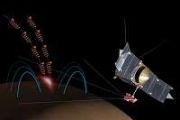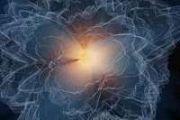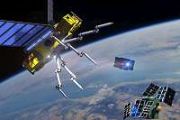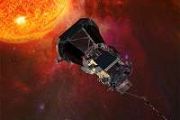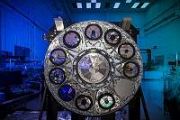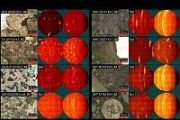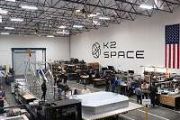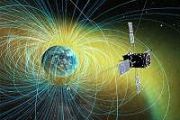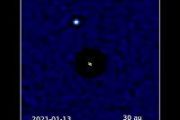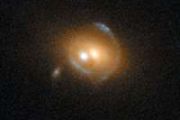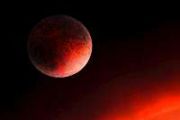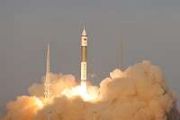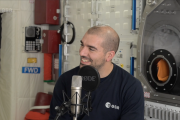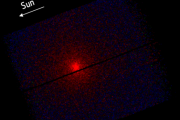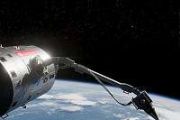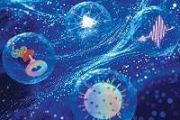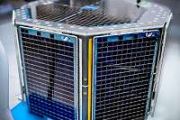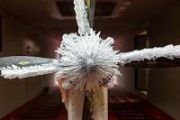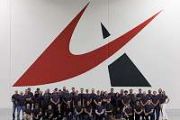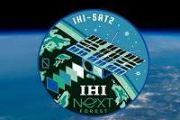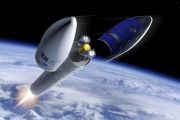
Copernical Team
Space42 signs major contract with UAE govt for satellite services and capacity expansion
 Space42 (ADX: SPACE42), the UAE-based AI-driven SpaceTech company, has secured an AED 18.7 billion (USD 5.1 billion) contract with the UAE Government to extend its provision of critical, secure communication services through 2043. The agreement builds on Space42's established partnership and further enhances its financial standing, contributing to a backlog of AED 26 billion (USD 7.1 billion) in
Space42 (ADX: SPACE42), the UAE-based AI-driven SpaceTech company, has secured an AED 18.7 billion (USD 5.1 billion) contract with the UAE Government to extend its provision of critical, secure communication services through 2043. The agreement builds on Space42's established partnership and further enhances its financial standing, contributing to a backlog of AED 26 billion (USD 7.1 billion) in Lunar outpost co leads Australia's first lunar rover initiative
 Lunar Outpost announced today that its Australian branch, Lunar Outpost Oceania, will lead efforts in constructing Australia's first lunar rover. The project, awarded to the ELO2 Consortium, is jointly led by Lunar Outpost Oceania and EPE Oceania.
Following an 18-month preliminary design phase, the ELO2 Consortium was selected to design, build, and operate the Australian-made rover on the
Lunar Outpost announced today that its Australian branch, Lunar Outpost Oceania, will lead efforts in constructing Australia's first lunar rover. The project, awarded to the ELO2 Consortium, is jointly led by Lunar Outpost Oceania and EPE Oceania.
Following an 18-month preliminary design phase, the ELO2 Consortium was selected to design, build, and operate the Australian-made rover on the Event Horizon Telescope advances imaging of black holes and jets
 The Event Horizon Telescope (EHT), renowned for its first images of black holes, is advancing its mission by exploring how black holes create powerful jets. A research team led by Anne-Kathrin Baczko from Chalmers University of Technology, Sweden, has demonstrated that the EHT can capture detailed images of a supermassive black hole and its jets in galaxy NGC 1052, 60 million light-years away. T
The Event Horizon Telescope (EHT), renowned for its first images of black holes, is advancing its mission by exploring how black holes create powerful jets. A research team led by Anne-Kathrin Baczko from Chalmers University of Technology, Sweden, has demonstrated that the EHT can capture detailed images of a supermassive black hole and its jets in galaxy NGC 1052, 60 million light-years away. T Stranded Boeing Starliner astronauts face new delay in return to Earth from ISS
 Two Boeing Starliner astronauts, stranded at the International Space Station in June after what was supposed to be a weeklong test flight, are facing a new delay in their return trip to Earth, NASA revealed Tuesday.
Suni Williams and Butch Wilmore had been scheduled to return on a SpaceX Dragon flight in February, after they were forced to abandon Starliner due to helium leaks and thrus
Two Boeing Starliner astronauts, stranded at the International Space Station in June after what was supposed to be a weeklong test flight, are facing a new delay in their return trip to Earth, NASA revealed Tuesday.
Suni Williams and Butch Wilmore had been scheduled to return on a SpaceX Dragon flight in February, after they were forced to abandon Starliner due to helium leaks and thrus U.S., India undertake strengthened space partnership
 The United States and India will partner on space exploration opportunities and begin joint training to space missions planned in the near future.
Indian Ambassador to the United States Vinay Kwatra, U.S. Deputy Secretary of State Kurt Campbell and Principal Deputy National Security Adviser Jon Finer traveled to the Johnson Space Center in Houston to mark the next step in the two nation
The United States and India will partner on space exploration opportunities and begin joint training to space missions planned in the near future.
Indian Ambassador to the United States Vinay Kwatra, U.S. Deputy Secretary of State Kurt Campbell and Principal Deputy National Security Adviser Jon Finer traveled to the Johnson Space Center in Houston to mark the next step in the two nation BigBear.ai and Proof Labs develop cyber resilient on-orbit solution for Air Force
 BigBear.ai (NYSE: BBAI), a leader in AI-powered decision intelligence solutions for defense and national security, has partnered with Proof Labs Inc to create a cyber resilience solution for the Department of the Air Force (DAF). Proof Labs, serving as the prime contractor, secured an AFWERX Small Business Innovation Research (SBIR) Direct-to-Phase II contract to develop the Cyber Resilient On-O
BigBear.ai (NYSE: BBAI), a leader in AI-powered decision intelligence solutions for defense and national security, has partnered with Proof Labs Inc to create a cyber resilience solution for the Department of the Air Force (DAF). Proof Labs, serving as the prime contractor, secured an AFWERX Small Business Innovation Research (SBIR) Direct-to-Phase II contract to develop the Cyber Resilient On-O IRIS2 contract signed to strengthen Europe's space connectivity and security
 The European Commission (EC) and the European Space Agency (ESA) have formally partnered with SpaceRISE, a consortium led by Eutelsat, Hispasat, and SES, to deliver and operate the Infrastructure for Resilience, Interconnectivity, and Security by Satellite (IRIS2) program. The contract, spanning 12 years, was signed during a ceremony at the EC headquarters in Brussels.
The IRIS2 constellat
The European Commission (EC) and the European Space Agency (ESA) have formally partnered with SpaceRISE, a consortium led by Eutelsat, Hispasat, and SES, to deliver and operate the Infrastructure for Resilience, Interconnectivity, and Security by Satellite (IRIS2) program. The contract, spanning 12 years, was signed during a ceremony at the EC headquarters in Brussels.
The IRIS2 constellat New study questions the potential for liquid brines on Mars
 More than a century after astronomer Percival Lowell speculated about water canals on Mars, researchers continue to grapple with the question of liquid water on the red planet. Liquid water is essential for habitability, but Mars' low temperatures, minimal atmospheric pressure, and limited water vapor make its presence unlikely under current conditions.
Dark surface features called recurri
More than a century after astronomer Percival Lowell speculated about water canals on Mars, researchers continue to grapple with the question of liquid water on the red planet. Liquid water is essential for habitability, but Mars' low temperatures, minimal atmospheric pressure, and limited water vapor make its presence unlikely under current conditions.
Dark surface features called recurri NASA outlines long-term goals for human presence in low earth orbit
 NASA has finalized its comprehensive strategy for sustaining human presence in low Earth orbit (LEO), outlining a clear path to advance microgravity research, technology, and exploration for global benefit. The Low Earth Orbit Microgravity Strategy, developed with input from industry, academia, and international partners, marks a critical step as the agency prepares for the transition from the I
NASA has finalized its comprehensive strategy for sustaining human presence in low Earth orbit (LEO), outlining a clear path to advance microgravity research, technology, and exploration for global benefit. The Low Earth Orbit Microgravity Strategy, developed with input from industry, academia, and international partners, marks a critical step as the agency prepares for the transition from the I Anthropologists urge preservation of human artifacts on Mars
 Are the spacecraft, rovers, and debris from human exploration of Mars merely trash cluttering the Red Planet, or are they invaluable artifacts chronicling humanity's steps into interplanetary exploration? University of Kansas anthropologist Justin Holcomb contends these items deserve preservation and cataloging to document this significant phase of human history.
Holcomb's new study, title
Are the spacecraft, rovers, and debris from human exploration of Mars merely trash cluttering the Red Planet, or are they invaluable artifacts chronicling humanity's steps into interplanetary exploration? University of Kansas anthropologist Justin Holcomb contends these items deserve preservation and cataloging to document this significant phase of human history.
Holcomb's new study, title 
